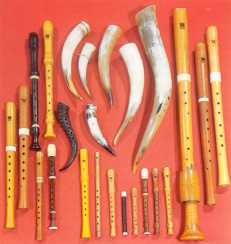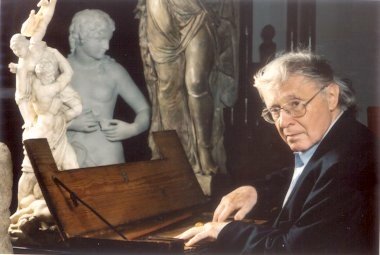| Programme I |
"DOULCE MEMOIRE" -- Preludes, German Songs, French Chansons, Italian Madrigals and Motets from the Tablature of Johannes Waissel (1592) |
| Programme II |
"WENN ICH GEDENCK DER STUND" -- Fantasias, Chorales, Souterliedekens, French Chansons, Madrigals, Motets, Villanellas, Neapolitans, Passamezzos, German and Polish Dances, Galliards from the Tablature of Johannes Waissel (1592) |
| Programme III |
"ACH LIEB MIT LEID" -- Preludes, Lieder, Dances and Motets from the Tablatures of Hans Judenkünig (1523) and Hans Neusiedler (1536) |
| Programme IV |
"VENI IN HORTUM MEUM" -- Fantasias, Mutetas, Cantiones Germanicas, Italicas ac Gallicas, by Jean Richafort, Josquin des Prez, Orlando di Lasso, Jacques Arcadelt, Philippe Verdelot etc. |
| Programme V |
LUYS VENEGAS DE HENESTROSA, LIBRO DE CIFRA NUEVA (1557) -- Music of the Spanish Renaissance at the Court of Charles V |
| Programme VI |
ANTONIO DE CABEZON (1510-1565): GLOSAS, TIENTOS, HIMNOS, DIFERENCIAS |
| Programme VII |
JOSQUIN DES PRES, SPLENDOR MUSICAE (c. 1440-1521) -- Intabulations of Motets in Veneration of the Virgin Mary by ANTONIO DE CABEZON (1510-1565) |
| Programme VIII |
FRANCESCO DA MILANO (1497-1543), RICERCARI E FANTASIE |
| Programme IX |
FROM THE TABLATURES OF THE BASEL HUMANIST BONIFACIUS AMERBACH (1495-1562) |
| Programm X |
"DON LUYS MILAN" (Valencia 1535) -- FANTASIAS, TIENTOS, PAVANAS |
| Programm XI |
"VICENZO CAPIROLA: COMPOSITIONE" (Brescia, um 1517) -- RICERCARI, PADUANEN, CHANSONS, MOTETTEN, FROTTOLE, Villancicos |
| Programm XII |
"MOTETTEN, FROTTOLEN UND FRANZÖSISCHE CHANSONS AUS DER ST. GALLENER TABULATUR DES FRIDOLIN SICHER" (1490 - 1546)
Josquin Desprez, Jean Mouton, Heinrich Isaac, Jacob Obrecht, Matthaeus Pipelare, Alexander Agricola, Bartolomeo Tromboncino)
|
| Programm XIII |
"GENUESER FANTASIEN DER FRÜHRENAISSANCE" -- GIOVANNI BATTISTA DELLA GOSTENA (ca. 1540 - 1598)
|
| Programm XIV |
"LUYS DE NARVÁEZ / DELPHIN DE MUSICA" (Valladolid, 1538) -- FANTASIAS, CANCIONES, DIFERENCIAS
|
| Programm XV |
"GUILLAUME MORLAYE"
|
| Programm XVI |
"TABULATUR DES LEONHARD KLEBER" (1522) -- PRAEAMBULA, CARMINA, MOTETTEN (Paul Hofhaimer, Hans Buchner, Magister Othmar Nachtgal)
|
| Programm XVII |
"MUSICA DI CASTELL’ARQUATO" -- ITALIENISCHE MADRIGALE, MOTETTEN, PAVANEN & SALTARELLI des späten 16. Jahrhunderts
|
| Programm XVIII |
"DIE TABULATUR DES JOHANNES VON LUBLIN" (1540) -- PRAEAMBULA, MOTETTEN, MADRIGALE, CHANSONS. DEUTSCHE, ITALIENISCHE & POLNISCHE TÄNZE
|
| Programm XIX |
"MUSIK DER SPANISCHEN RENAISSANCE ENRIQUEZ DE VALDERRABANO / SILVA DE SIRENAS" (Valladolid 1547)
|
| Programm XX |
"MUSICA DI CASTELL'ARQUATO II" -- RICERCARI, MADRIGALE, MOTETTEN UND TÄNZE DER FLÄMISCHEN UND ITALIENISCHEN SPÄTRENAISSANCE
|

